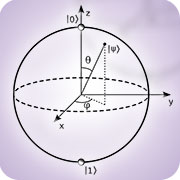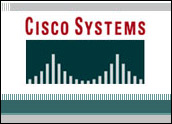
Quantum Computers, Part 2: Zeros and Ones, Both and Neither
At universities and companies around the globe, there are people plugging away trying to solve the myriad technological challenges of quantum computers. But that doesn’t mean practical applications of quantum computing are some futuristic fantasy. Already, quantum technology is trickling into the real world.
One big leap happened earlier this year when security company Lockheed Martin purchased the 128-qubit “D Wave One,” which Forbes calledthe first commercially available quantum computer. (This isn’t certain because, as Bristol University’s Jeremy O’Brien noted, “If it’s that important that you’re using this technology, you wouldn’t want to advertise.”)
D Wave refuses to let the perfect get in the way of the good, commented Geordie Rose, the chief technology officer at D Wave. Even if the prototypical quantum computer doesn’t yet exist, D Wave is proof that the tools are in place to build infant quantum computers — and an infant quantum computer can outwit the most advanced conventional computers.
“There is this feeling that quantum computing is this mystical thing,” Rose said. “They’re not. They’re hard to build, but everything is difficult to build. The latest iPhone was really hard to build. So these things are hard to build, but you can do it with a concerted effort.”
Communicating in Quantum
Seeing as it’s a global security company, the details on how Lockheed Martin will implement the D Wave One are kept secret, as are the exact design specs of D Wave’s computer. But that is not the only marriage of quantum technology and commercial enterprise.
The Bristol University research team led by O’Brien is working in collaboration with cellphone giant Nokia.
Communications companies will be huge beneficiaries of quantum technology, O’Brien said.
The analogy he used (after qualifying that such analogies are inherently flawed) was measuring a piece of paper with a ruler.
When we measure a piece of paper, it doesn’t matter that “we have to rain photons down onto that piece of paper,” he pointed out. The paper’s properties are unaffected by the presence of an observer.
Not so in the quantum world.
“Because it’s a quantum mechanical system, any information that a third party extracts is detectable,” O’Brien said. “What this means is you and I could set up a communication link where we could guarantee, by the laws of physics, that the information isn’t being disturbed.”
This is important because there will inevitably be more and more information transmitted electronically, he explained. “In five year’s time, it will be quite conceivable that your phone will be telling your doctor you have high blood pressure or telling your bank that you’re buying a new home. We’re going to be transferring more and more information, and we need to make sure it’s protected.”
Like 2 Protons in an Atom
More and more, quantum technology is breaking free from the shackles of the laboratory and diffusing into the commercial market — be it in the name of national security or telecommunications. And this figures to be a self-perpetuating phenomenon: As companies invest in this technology, the technology will get better, more companies will invest and so on. This in itself is a departure from classical computing, noted IBM’s Mark Ketchen.
“It used to be, back in the 80s or so, if you looked at the technology we developed on computers, we basically said, ‘We gotta have it all. We gotta own this technology. We’re going to do all this innovation and we’re not going to let people know what we’re up to too much,'” he recalled.
Now IBM is collaborating a host of partners — from Princeton to the University of Wisconsin to BBN Technologies, said Ketchen. For its part, D Wave’s investors include Goldman Sachs, Draper Fisher Jurvetson, the Business Development Bank of Canada, International Investment Underwriters and more.
“That whole notion of developing technology in isolation is gone,” Ketchen said. “Cost is one factor, but I think another actor is man. There is no way one company or one institution is going to have the brainpower for this, no matter what. So we have a strong team ourselves, and we’re very eager to work directly with other institutions, and in some cases other companies.”
The Future Not Yet Decoded
Exactly what this cooperation produces, and when it does so, is anyone’s guess. For the various groups and nations involved in this enterprise — from private companies to universities, from Santa Barbara to Bristol — there is a sense among those in the field that the exact impact of quantum computing is unknown.
To invoke another analogy: Quantum computers are today what telephones were in the 1950s. The basic technology is known, but where that technology goes, and how it gets there, is still something of a mystery.
“As more and more smart people start playing with it, the number of things a quantum computer can do will grow quite rapidly,” Ketchen observed. “We know, based on history, that when such a machine actually exists, there will be a whole new range of things to do that nobody is even thinking about right now. There are things that are inaccessible now that will be accessible when it exists.
“A whole new world is going to open up.”
That last part, it seems, has better than a non-unit probability of coming true.





















































